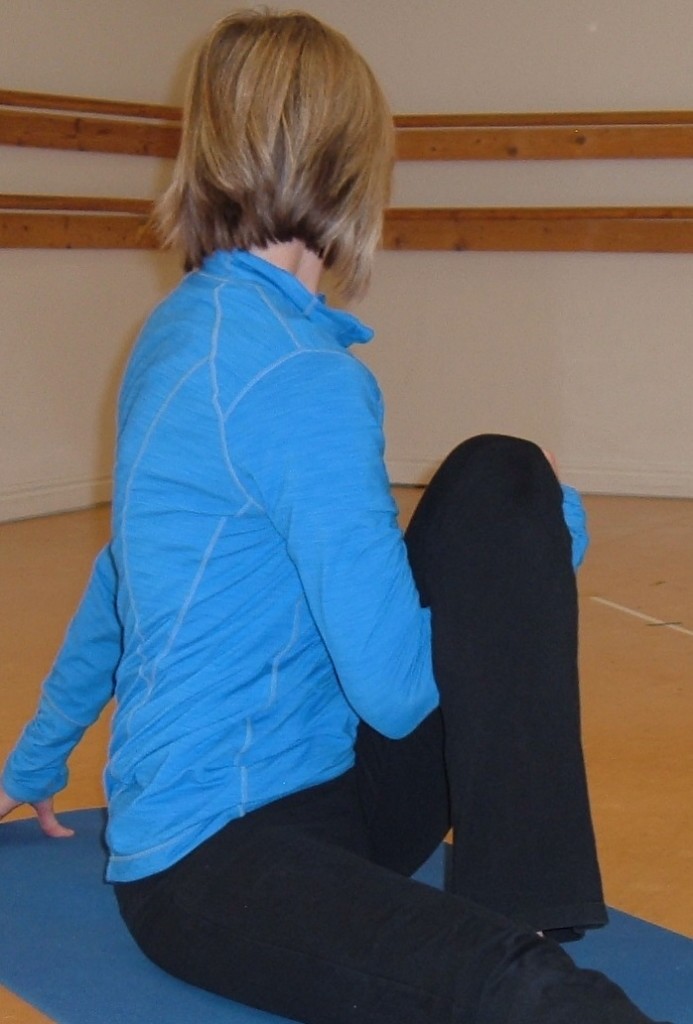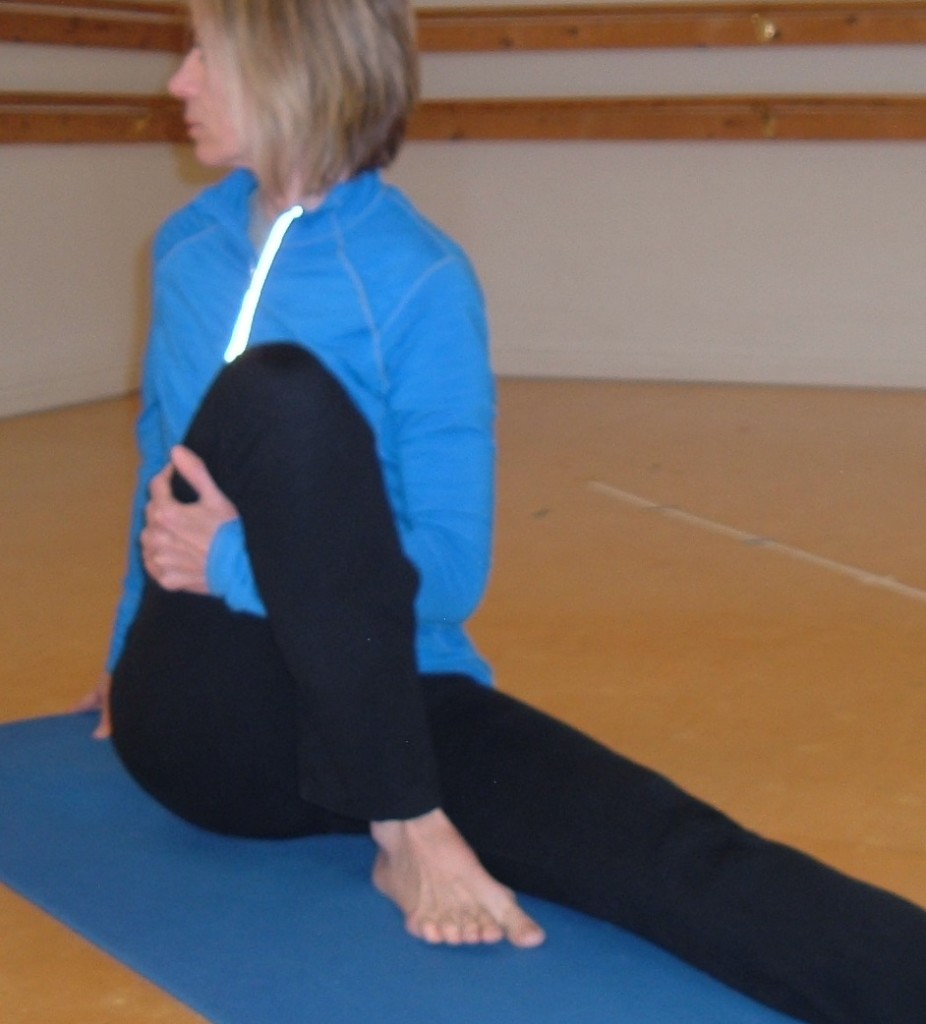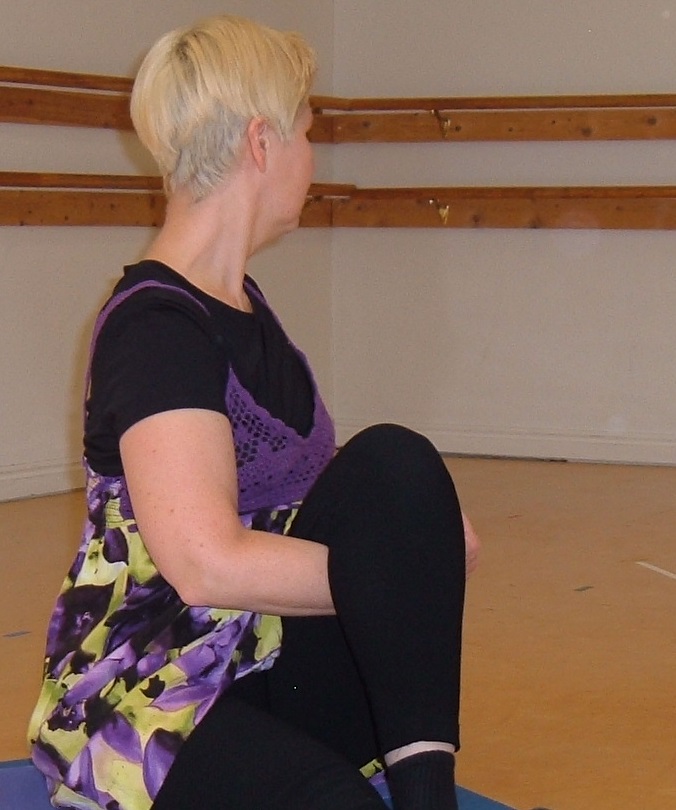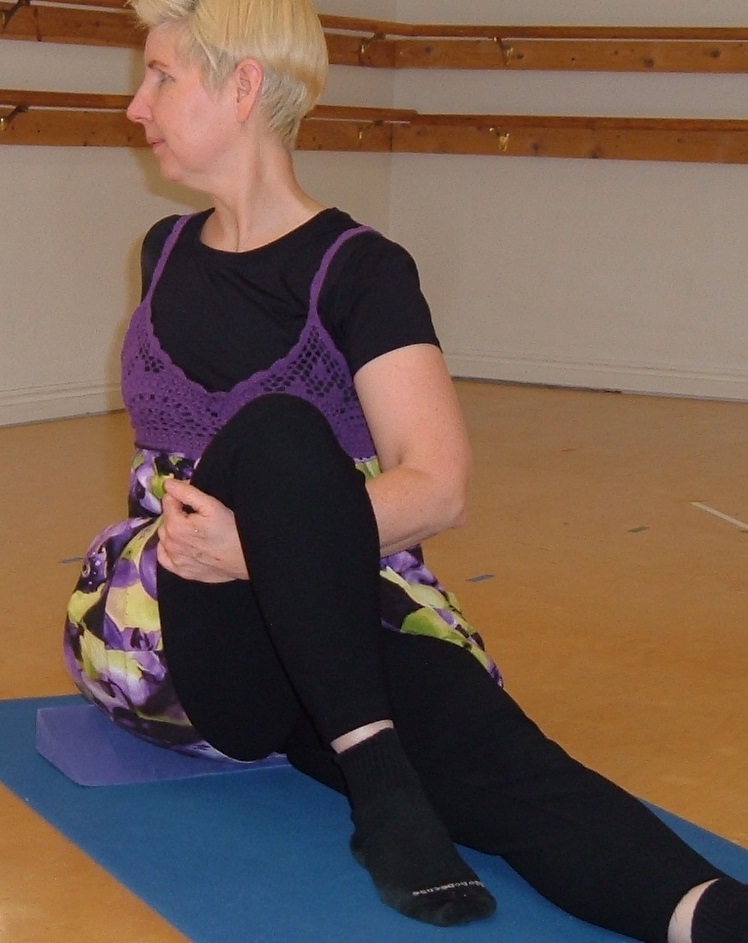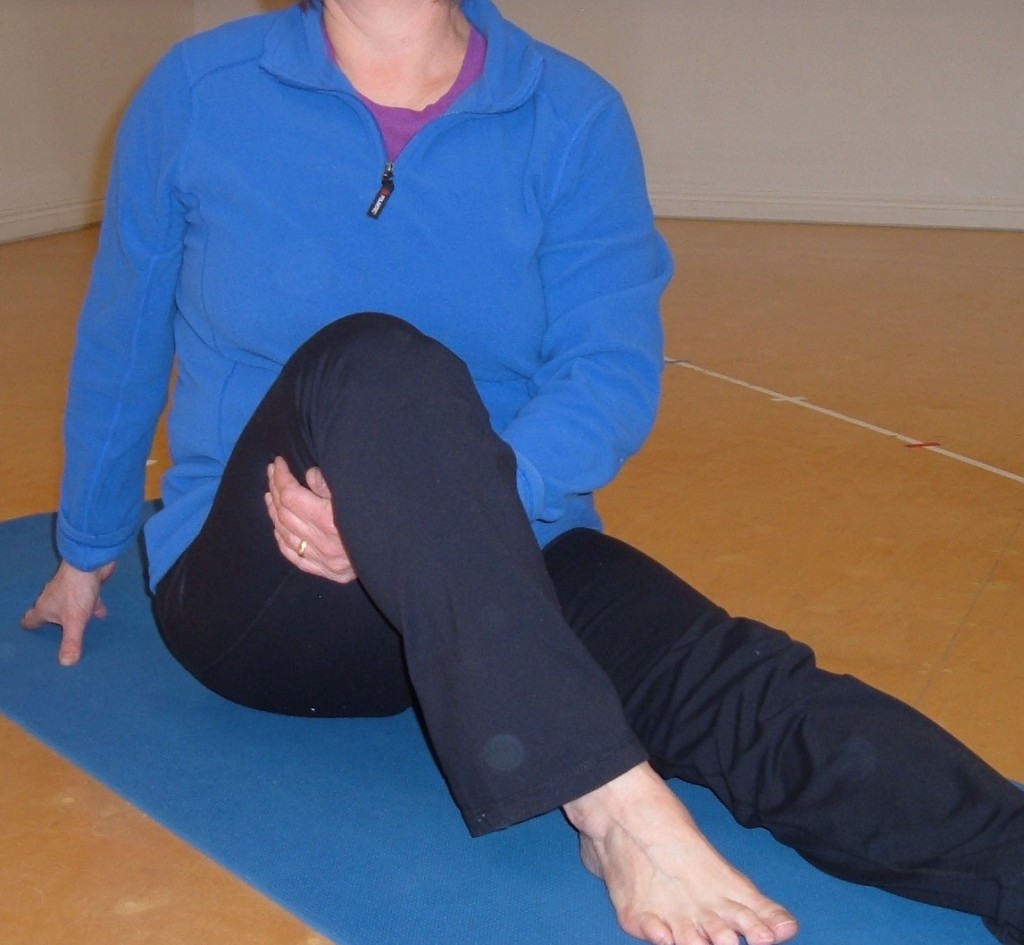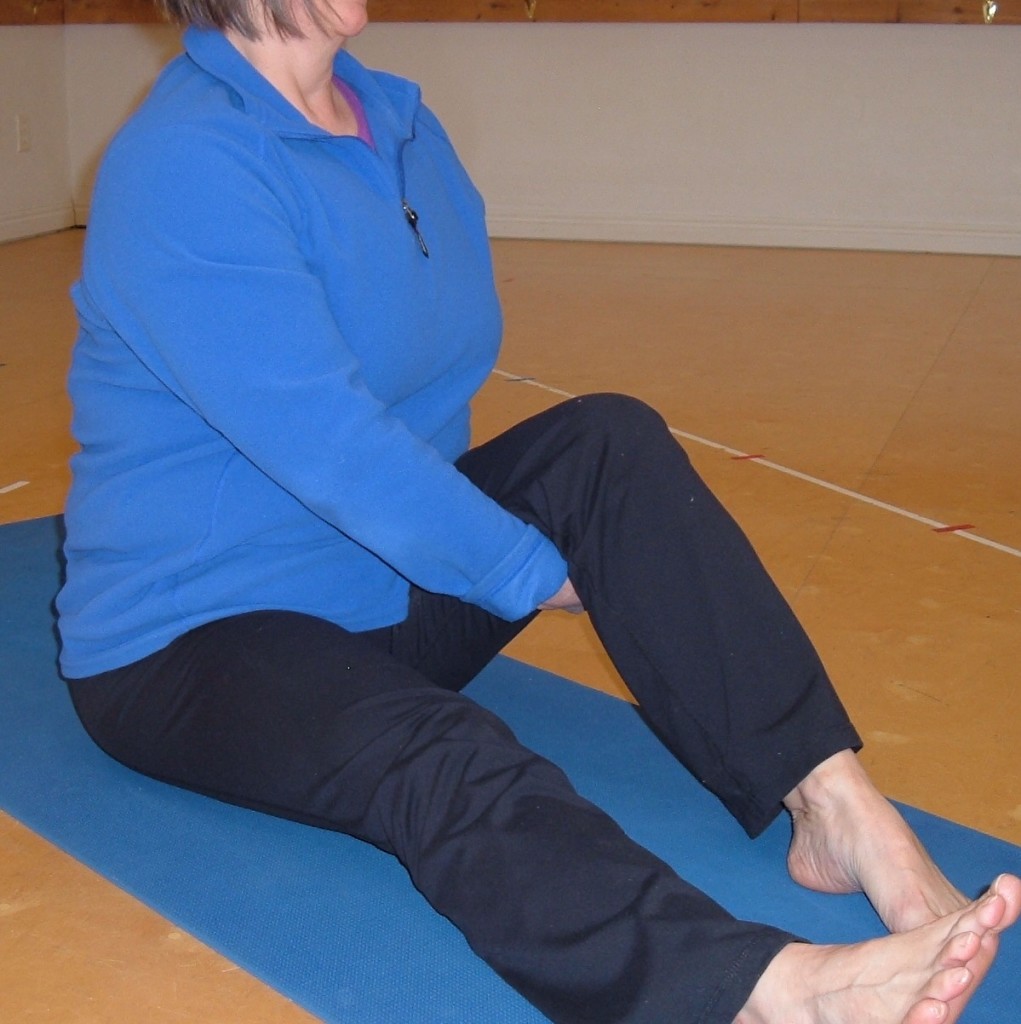Let’s examine how different body builds can approach a seated twist or one version of marichyasana.
The standard text book posture would be something like this:
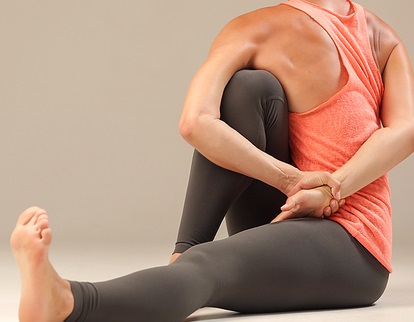
This is a posture that only very few average class member will accomplish and it can be discouraging if the class sees this as the goal of the posture. This model has long arms, good mobility in the hips, shoulders and spine and just the right proportion of torso to leg. That’s why it looks easy and well-aligned on her.
Let’s look at some variations:
This model is more like the standard with long arms, hip mobility, and not too much flesh in the torso to prevent the leg from coming right close into the body. This student however, has a more moderate shoulder flexibility and chooses not to strain to bind. Ease of breath, length in the spine and rooting thru sit bones are all more important than binding.
We are also showing the variation of hand holding underneath the bent knee rather than outside. Notice the relaxation that can occur in the shoulders and neck when this is the option.
The next student has short arms, stable mobility in hips, shoulders and spine, and more body tissue in the belly area. Adjustments are made but we still have a twist that is nicely aligned with the hand holding under the bent knee.
The next student has a strong, stout torso and limited mobility in shoulder, hips and spine. But even with this body shape, a twist can be comfortable and successful. For this student, the hand underneath the bent knee is about the only option available.

